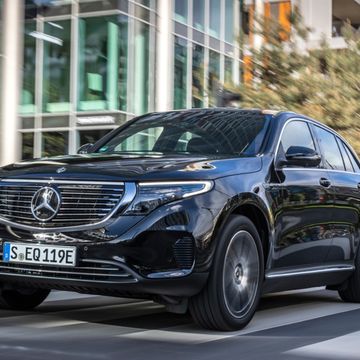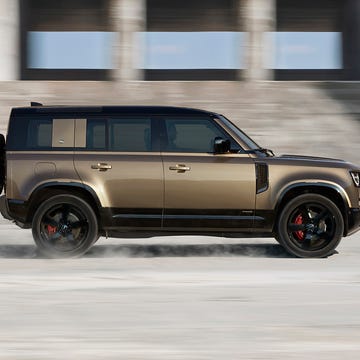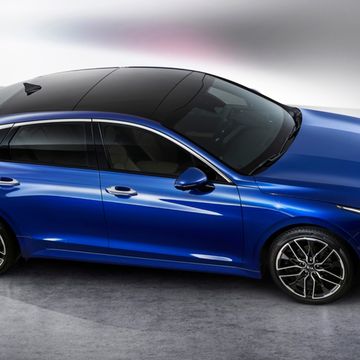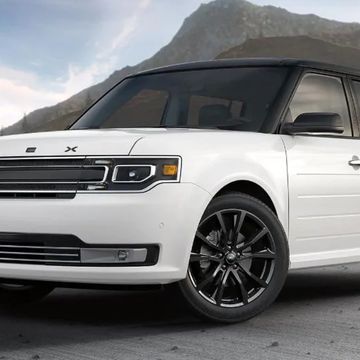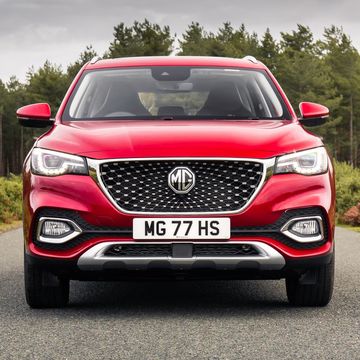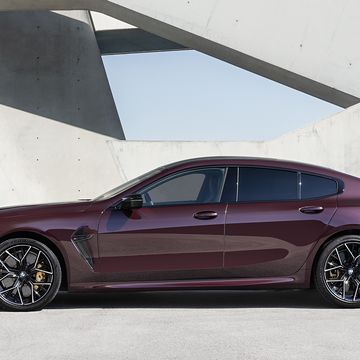After only a few turns -- in fact, after just the first turn -- it was obvious Peter Rawlinson, chief technology officer of upstart electric car maker Lucid Motors, could drive. And not just drive as in stay between the lines and not hit anything. No, this dude was picking a perfect line, holding momentum just right, dropping down to the apex and then drifting out while steadily accelerating. He was good, and not just by the all-too-low standards of car company executives. He was threading the empty streets of undeveloped Las Vegas wasteland like he was qualifying on a street circuit. So we asked him if he was a race-car driver in a former life.
“No,” he said. “I’ve got test-driving experience at Jaguar and Lotus. I wasn’t a proper test driver. I was chief engineer, but because I was chief engineer I was allowed to go drive cars.”
Which is what he did. And as chief engineer, every once in a while he would determine that longer tests were necessary.
“I took the Elise 'round Europe and I drove it 'round Spa-Francorchamps,” he said.
We would have liked to have been along for that ride.
Instead, we were along for a Las Vegas lap in the Lucid Motors Air sedan, a luxury performance electric car with a drivetrain so powerful you have to make room for four digits in the output column. It makes -- hang on to your hosiery -- 1,000 hp ... 400 for the front motor and 600 rear. No foolin’!
“And that’s an honest 1,000 hp,” he said. “We are quite sure.”
There are some electric carmakers -- he said he wouldn’t name names -- who make outrageous claims about electric car output but whose motors simply can’t deliver the horsepower they are claiming. The Lucid Air’s spec really is in the four digits. The biggest of the proprietary Li-Ion battery packs available will be 130 kWh, good for a range of 400 miles. Zero to 60 will come up in 2.5 seconds, and top speed will be 200 mph.
And the handling is pretty good, too, even at this early stage.
“I think you can feel this car is, straight out of the box, before we’ve done any chassis development, it’s pretty well planted and it’s got some nice ride qualities. The steering is very precise.”
He may have been biased. Nonetheless, even though we were in the passenger’s seat, the car felt like it was cornering flat, and the transition from power-off to power-on was smooth and even, no clunks anywhere in the power band. We look forward to production levels of refinement when the first cars come out in early 2019.
Now, you could be skeptical about the chances of any startup carmaker making it all the way to a production model, sure. And in fact, the very first thing we asked Rawlinson was, quote, “Do you have any money?” He didn’t flinch.
“Yes,” he said. “Yes, we do.”
They have funding to continue developing the car and building the factory for the foreseeable future, and they have a solid plan to get more.
“We are embarking on our Series D funding round right now, actually. It’s a capital-intensive endeavor, a capital-intensive business model.”
And he’s not pretending the company won’t need more.
“We will need to secure additional funding to see this through. That starts right away, on Jan. 17 (with our) Series D. The timing is right because, having launched the brand, announced where the factory is (Casa Grande, Arizona) and then shown the car last December, that was a precursor to ramping up to be in the position to seek Series D funding. We’ve got enough money in the bank to see us through for a decent period of time. And we believe we’re an imminently investable proposition because we’re showing such a desirable car.”
And it’s all being done without any expectation of government help.
“Our business model does not rely upon government incentives or initiatives or support,” Rawlinson said. “We’re not dependent on ZEV credits for our business model to work.”
While one of Lucid’s backers is Jia Yueting, who is also backing Faraday Future and LeEco, Lucid has other backers and is seeking more funding on its own. So you could argue that it’s on fairly good financial ground.
More importantly, their car is fast. And comfortable. Or it will be comfortable once they put an interior in it. Ours, as we said, was what’s called an alpha prototype, which had no interior, no sound insulation, no dashboard and lots of wires hanging all over the place. But it was roomy, which is one of the main draws of the Lucid Air.
“The silhouette of the car has been directly derived from Peter’s vision of a sport luxury sedan,” said designer Derek Jenkins. “When you don’t have a six- or an eight-cylinder combustion motor up front, you really can rethink the layout. It’s an imaginative use of space.”
As you look at the car in profile, you can see the purposeful shape, especially the hump for the rear-seat headroom.
“With the typical sedan, you’re trying to make the cabin short and more coupe-like,” Jenkins said. “Ours is all about the cabin. So we’re going to elongate the cabin, make it more aircraft-like. It’s going to look low and sleek on the road, but it’s also going to suggest that it has tremendous interior space.”
Especially in the back. Ours had the bench seat that will be available in the entry-level Air, expected to sell for somewhere around $65,000. But there will also be a super-luxurious model with aircraft-like rear seats that recline 55 degrees, which no one else offers.
“It was an idea I had,” said Rawlinson. “What an aircraft for the road would be like. Audi, BMW and Mercedes make long-wheelbase versions (of their sedans). Audi has to make two versions of their A6, two of the A8. I thought, ‘Couldn’t we make a long interior with a more compact exterior? Could we do that with an electric powertrain?’ So you’ve got something compact. Something with Bugatti performance but the interior space of an S-Class Mercedes.”
Rawlinson credits the compact nature of electric motors.
“That has been challenging but so rewarding,” he said. “The platform architecture, the enabler to do all this, has been the electric powertrain. We would not have been able to do this with a gasoline powertrain. The interior space and comfort and legroom is all possible because it’s electric. That’s what’s rewriting the rules. And this is why this car is the big next step.”
Vehicle Model Information
ON SALE: Early 2019
BASE PRICE: $65,000
AS TESTED PRICE: Mid-$100,000s
POWERTRAIN: Dual 3-phase asynchronous induction motors, one front, one rear; awd
OUTPUT: 1000 hp (mfg)
0-60 MPH: 2.5 seconds (mfg.)
FUEL ECONOMY: 400 miles range
OPTIONS: Nicer back seats
PROS: It has 1000 hp, goes 200 mph and seats four
CONS: Do you like that roofline?

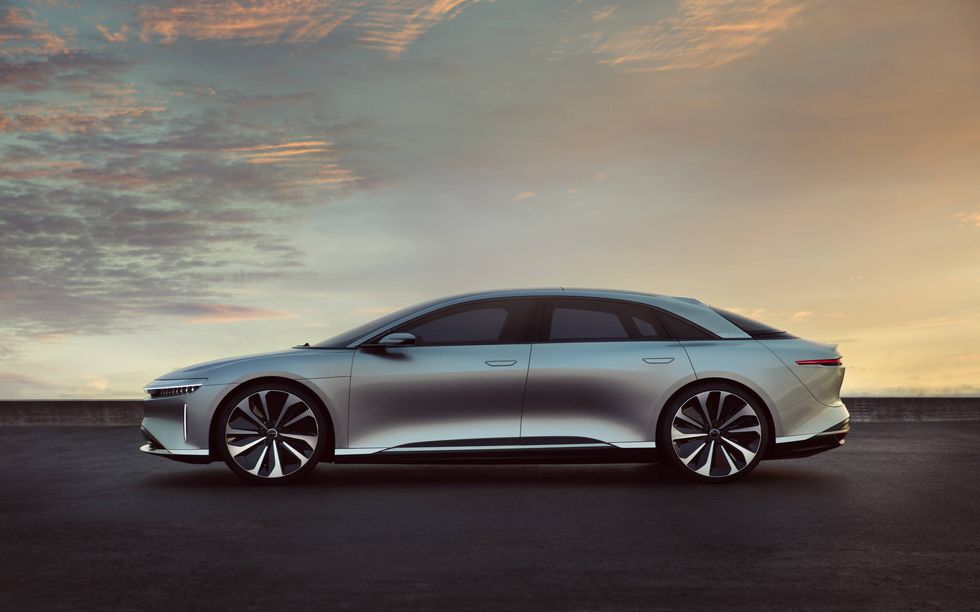
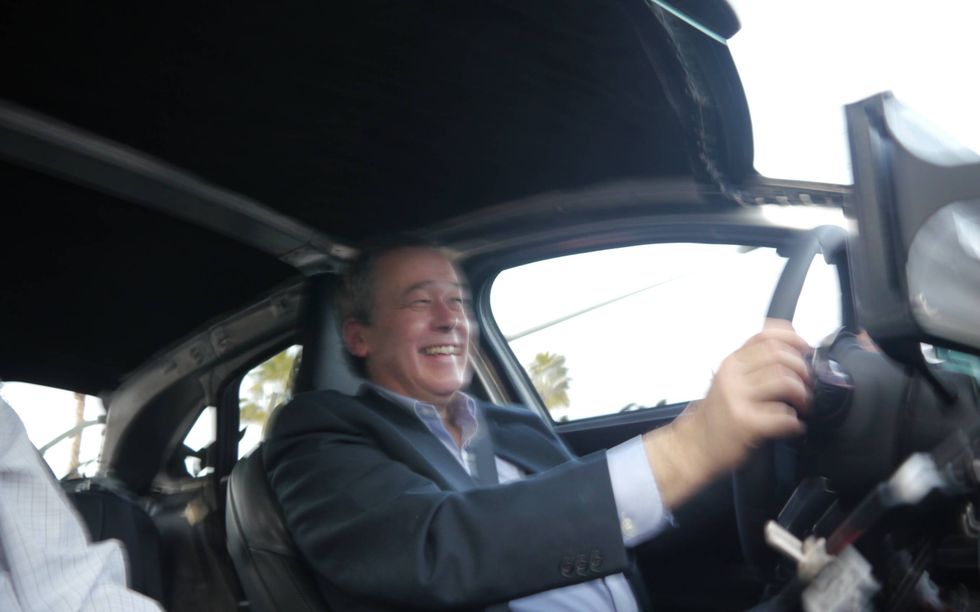
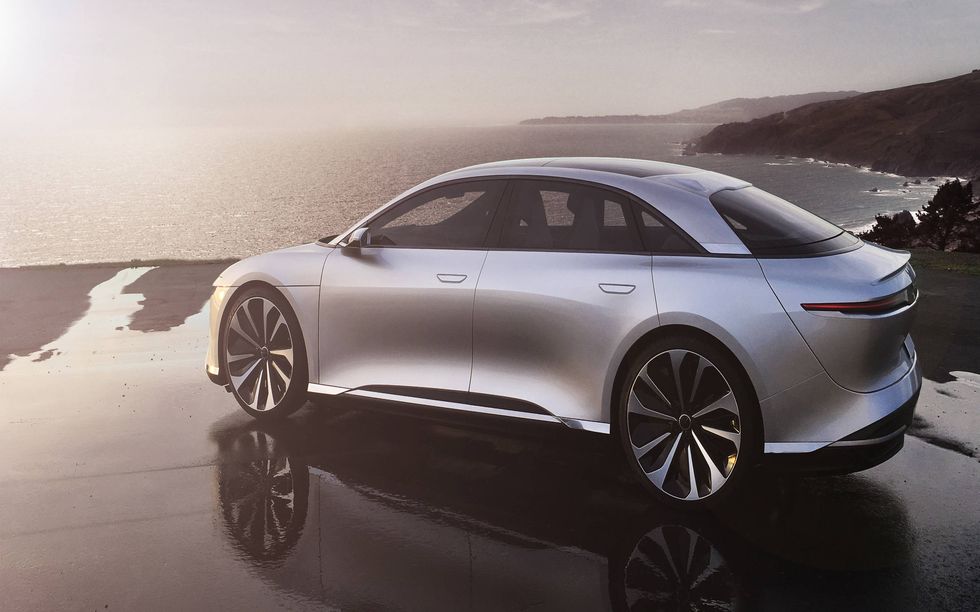
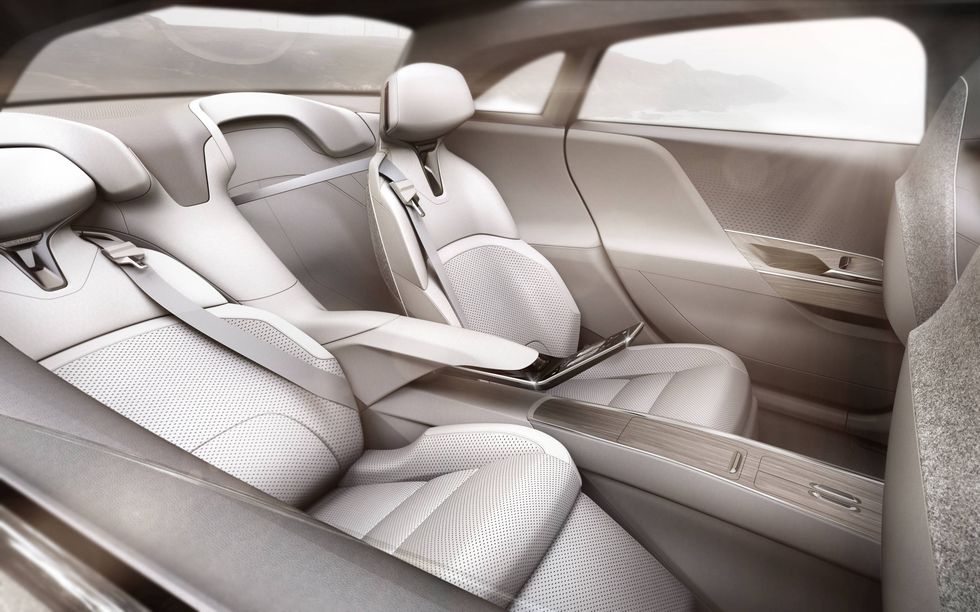
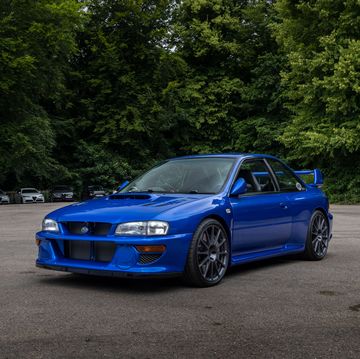
.jpg?crop=0.5625xw:1xh;center,top&resize=360:*)
